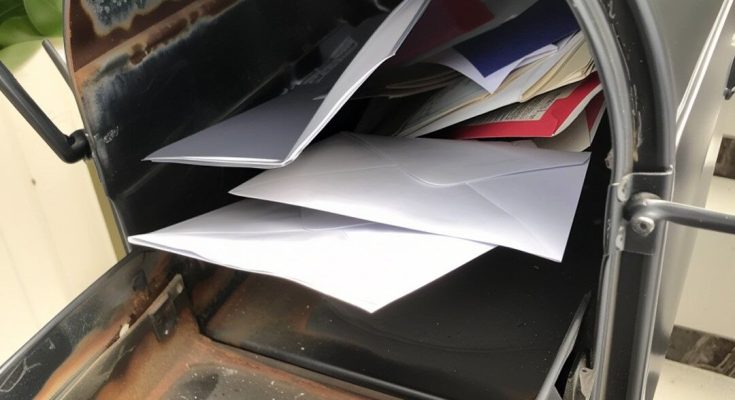Typically, she would be more eager about dessert or her favorite TV show. But I handed her the key, thinking it was just a random curiosity. She sprinted outside with a beaming smile, making it seem like the highlight of her day.
The next day, she asked again if she could check the mail, and I noticed a growing excitement in her. This quickly turned into a daily routine, with her eagerly fetching the mail every evening. By the fourth day, I couldn’t help but wonder what had sparked this sudden enthusiasm.I began noticing subtle changes in her behavior.
Lily, who was usually open and cheerful, had started acting a bit secretive. She spent more time in her room, and her usual laughter seemed quieter, almost as if something was weighing on her mind. When I asked if she was okay, she assured me she was, but her voice lacked its usual spark. One evening, as I was tucking her into bed, she asked me a peculiar question about whether people could communicate through letters even if they didn’t know each other well. I told her they could, that letters could create beautiful connections. She seemed satisfied with my answer but offered no further explanation. The following morning, I noticed her slipping something into her backpack before school. When I asked what it was, she casually mentioned it was for a school project and quickly changed the subject. Although my curiosity was piqued, I decided not to press her. However, her growing protectiveness over the mailbox began to worry me.
She insisted it was a secret and wouldn’t let me check the mail.Unable to contain my concern any longer, I decided to see what was going on. After she left for school one morning, I nervously opened the mailbox, half-expecting to find something troubling. Instead, I found several neatly folded letters, each one addressed to our mailwoman, Mrs. Thompson. As I read the first letter, my eyes filled with tears. Lily had been writing to Mrs. Thompson, offering comfort and friendship after learning she had lost her daughter. Her letters were filled with warmth, sharing little anecdotes from her day and offering words of kindness. One letter mentioned learning about butterflies at school, accompanied by a colorful drawing, while another described baking cookies with me and wishing she could share them with Mrs. Thompson.
Among Lily’s letters, I found one from Mrs. Thompson, thanking Lily for her sweet words and expressing how much they meant to her during such a difficult time. She wrote that Lily’s letters had brought a bit of light into her life, making her loss a little easier to bear.Overwhelmed with pride and emotion, I realized how much Lily’s small act of kindness had impacted Mrs. Thompson. That evening, when Lily asked to check the mailbox, I handed her the key with a smile, telling her she had the biggest heart of anyone I knew. From then on, I encouraged Lily’s correspondence with Mrs. Thompson. Eventually, we invited her over for tea, where we shared stories, laughter, and, of course, Lily’s homemade cookies. As the three of us bonded over the afternoon, I was reminded of the incredible power of simple acts of kindness. Watching Lily and Mrs. Thompson connect, I saw firsthand how even the smallest gestures could create the most beautiful friendships. Lily’s compassion had not only brought comfort to Mrs. Thompson but also reminded me of the profound impact we can have on others, often in the most unexpected ways. As we sat on the porch that evening, Lily asked if we would always be friends with Mrs. Thompson. I assured her that the kindness and love she had shown would make their friendship last. Holding her close, I felt a deep sense of gratitude for the lesson Lily had taught me—that sometimes, the simplest acts of kindness can lead to the most meaningful connections.



